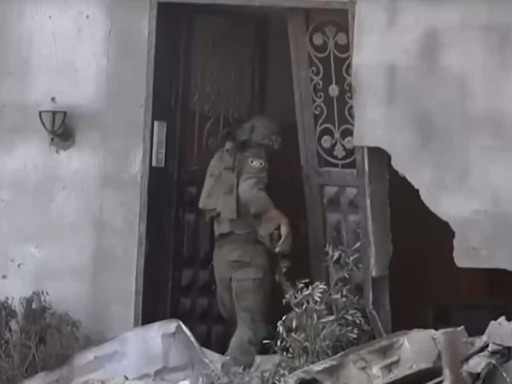The United Nations Relief and Works Agency for Palestine Refugees (UNRWA) has released its latest situation report on the impact of Israel’s genocide in Gaza. Via the United Nations Office for the Coordination of Human Affairs (OCHA), it can confirm that over 82% of Gaza’s buildings are within the Israeli militarised zone. Almost all of the city’s facilities have been affected during the war.
And, a staggering 845 people have been killed while seeking refuge in UNRWA facilities, including more than 370 of its staff. It noted that it had provided shelter to nearly one million people, as well as psychological and social support to more than 237,000 displaced persons. This includes children, survivors of gender-based violence. and those released from detention.
Coupled with this picture of devastation, the Gaza Health Ministry has also confirmed that Israel has killed at least 66,148 Palestinians since October 2023.
UNRWA confirms famine spreads in Gaza
UNRWA also confirmed that famine has been officially declared in the Gaza Strip, with expectations that it will spread to Deir al-Balah and Khan Yunis.
However, the organisation has found it difficult to track the numbers of people affected by famine, as it writes:
UNRWA’s capacity to monitor and address the spread of famine and malnutrition in Gaza City has been further restricted, amid the expansion of the Israeli military operations in the area. During the reporting period, only one medical facility continued to conduct malnutrition screening and treatment in Gaza City, functioning at minimum capacity.
During periods of truce, the agency reached more than two million people with food aid, but ran out of food at the end of April 2025. This was after Israeli authorities blocked all humanitarian aid, including food, from entering since 2 March 2025. UNRWA stated that it had three months’ worth of food stocks still stuck outside the Strip.
As of May 2025, the Food and Agriculture Organization (FAO) and the United Nations Satellite Centre (UNOSAT) found that more than 95% of Gaza’s agricultural land was entirely unusable.
Health system on the verge of collapse
UNRWA also previously reported in May, via OCHA, that Israel had targeted medical personnel, hospitals, and health infrastructure in Gaza in more than 790 attacks.
UNWRA’s latest report has echoed an end of September statement from the World Health Organization (WHO), detailing that:
the situation at the remaining eight hospitals and one field hospital in the city is critical. Those health points are overwhelmed by the influx of casualties resulting from strikes, in addition to providing medical care for non-trauma patients.
On top of this, the report highlighted how only four of the 22 health centres were still functioning as of October 2025. This was in addition to three temporary centres and 30 field medical points.
Moreover, the situation at UNRWA medical points in Gaza City is dire, with the report describing that:
Only one UNRWA medical point remains functioning in Gaza City and continues providing primary healthcare services, albeit at minimum capacity. The remaining UNRWA health facilities in Gaza City (namely one health centre in Beach Camp and three medical points) were forced to suspend services. Previously, UNRWA medical teams provided services to around 4,000 patients per day in Gaza City.
Despite operating with such limited capacity, UNRWA has provided more than 10 million initial medical consultations, screened 277,100 children under the age of five for malnutrition, and vaccinated more than 300,000 children as part of routine vaccination programmes.
Water and sanitation in a state of collapse
In July, the UN condemned Israel using thirst “as a weapon to kill Palestinians”. Its deliberate targeting of water facilities and sewage systems had precipitated a sanitation crisis. Israel has destroyed or damaged close to 90% of water, sanitation and hygiene infrastructure.
Half a million women and girls lack basic hygiene supplies. Meanwhile 60% of households do not have soap, and more than 40% of families live surrounded by uncollected waste.
In September, UNRWA separately reported a surge in infectious diseases across the Strip. This includes respiratory infections, acute diarrhoea, scabies and skin rashes, as well as suspected cases of meningitis, tuberculosis and the rare Guillain-Barré syndrome.
Despite this, UNRWA has managed to distribute more than 2 billion litres of water to 1.4 million people, collect 6,000 tonnes of waste per month, and distribute more than 338,000 personal hygiene kits since January 2024. However, the ongoing siege has forced UNRWA to suspend all water, sanitation, and hygiene services outside emergency shelters during the reporting period between 18 to 24 September. This was including:
water trucking, solid waste removal and the maintenance of the UNRWA main well in the North.
What’s more, it entirely suspended all solid waste activities in Gaza City for the same period.
The education crisis revealed by UNRWA
The agency reported that Israel has deprived around 660,000 children of education for the third consecutive year. Half of these are UNRWA school students.
The report highlighted the UNRWA commissioner general Philippe Lazzarini’s “call to action” at the recent UN General Assembly side event. During this, he noted that:
Every day, for nearly two years, the equivalent of a classroom full of children has been killed.
On top of this, he said that survivors:
have lost nearly four of the last five academic years due to conflict, COVID-19, and displacement.
The United Nations Satellite Centre (UNOSAT) data in July identified that 92% of school buildings require complete reconstruction or major maintenance to return to operation. Israel has damaged approximately 97% of UNRWA schools through sustained shelling.
Despite these devastating conditions, UNRWA has reached more than half a million children with psychosocial support activities. It has provided education to more than 59,000 children in shelters, in addition to 290,000 children enrolled in distance learning programmes.
Feature image via BBC News/Youtube.
By Alaa Shamali
From Canary via this RSS feed


